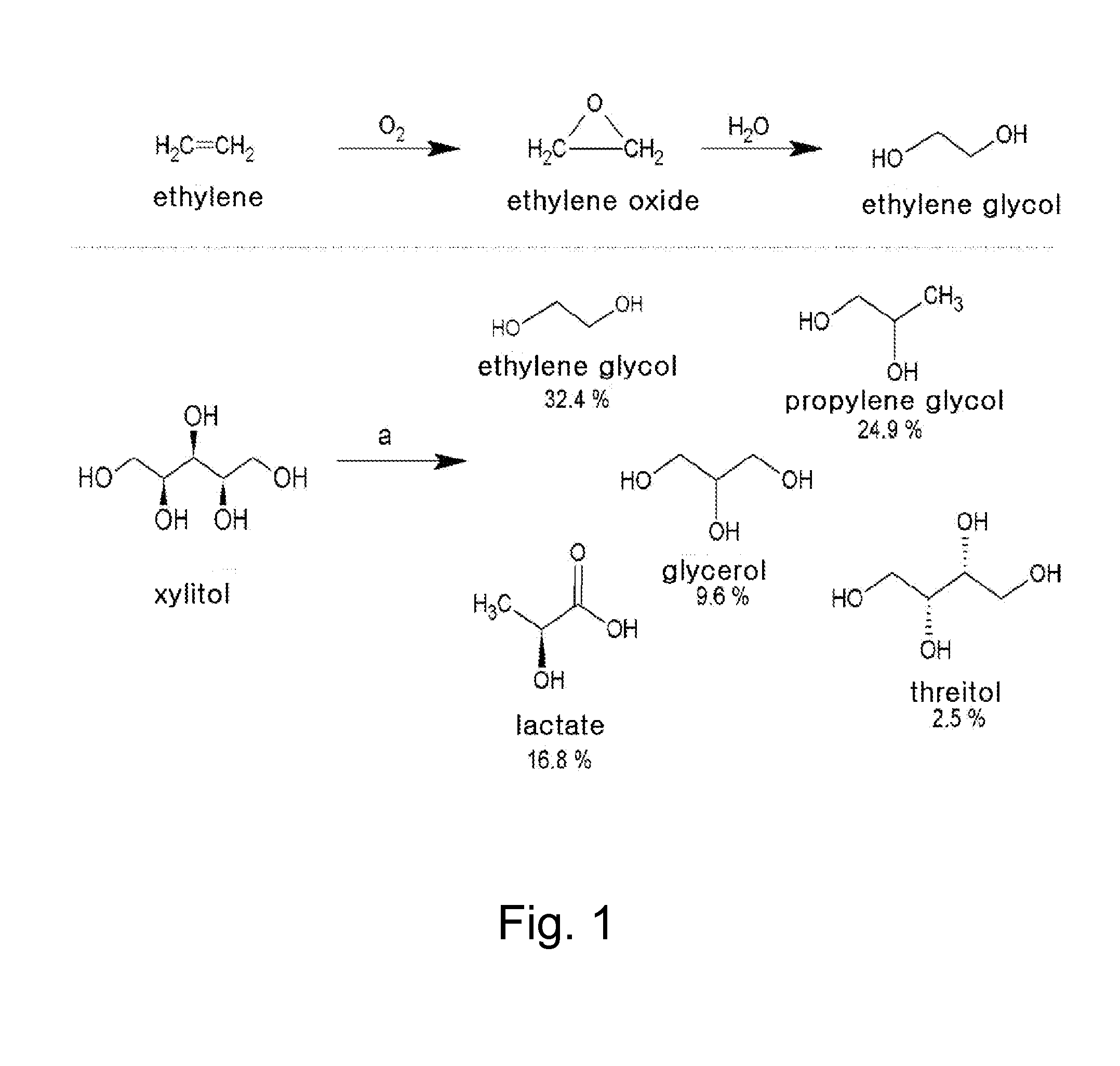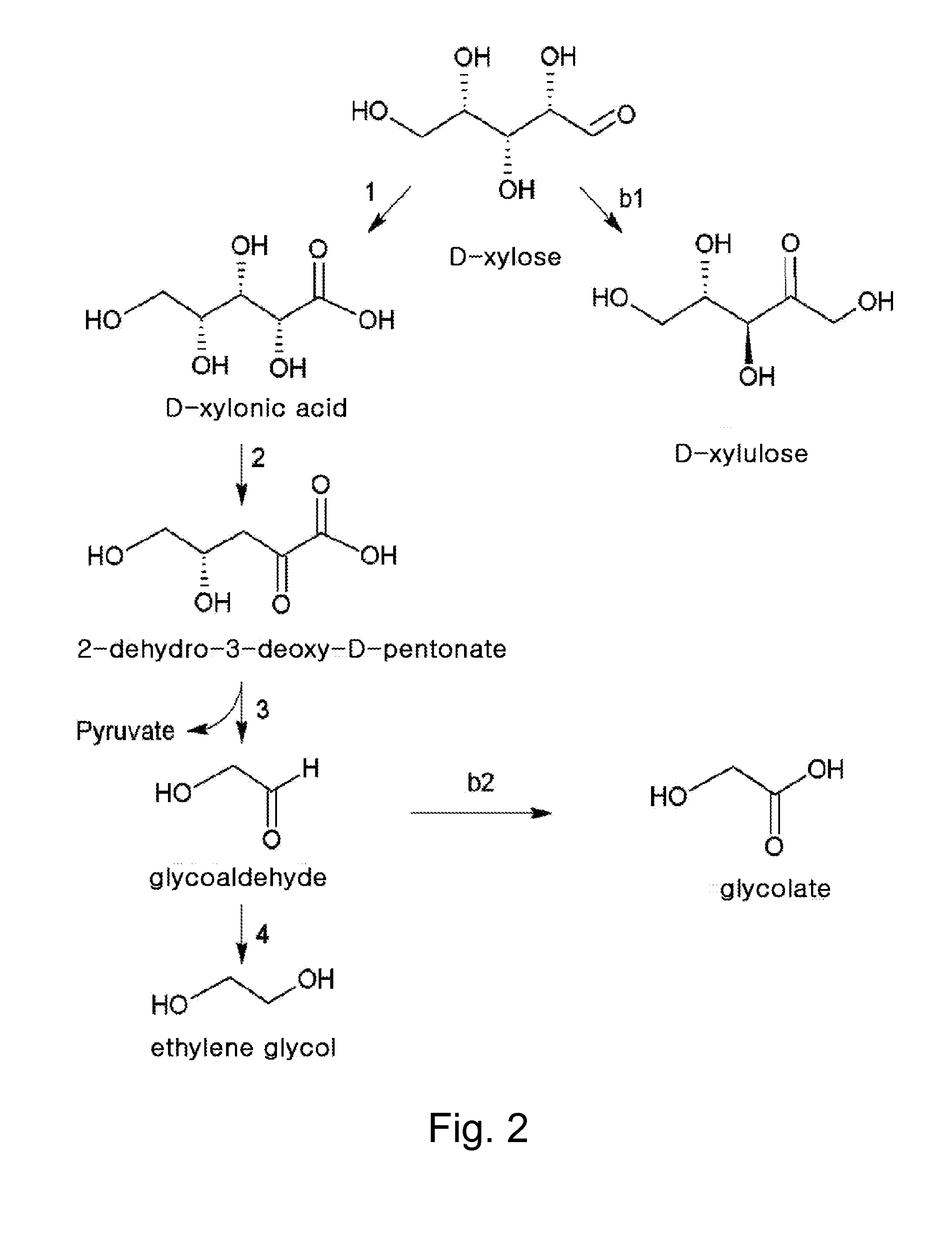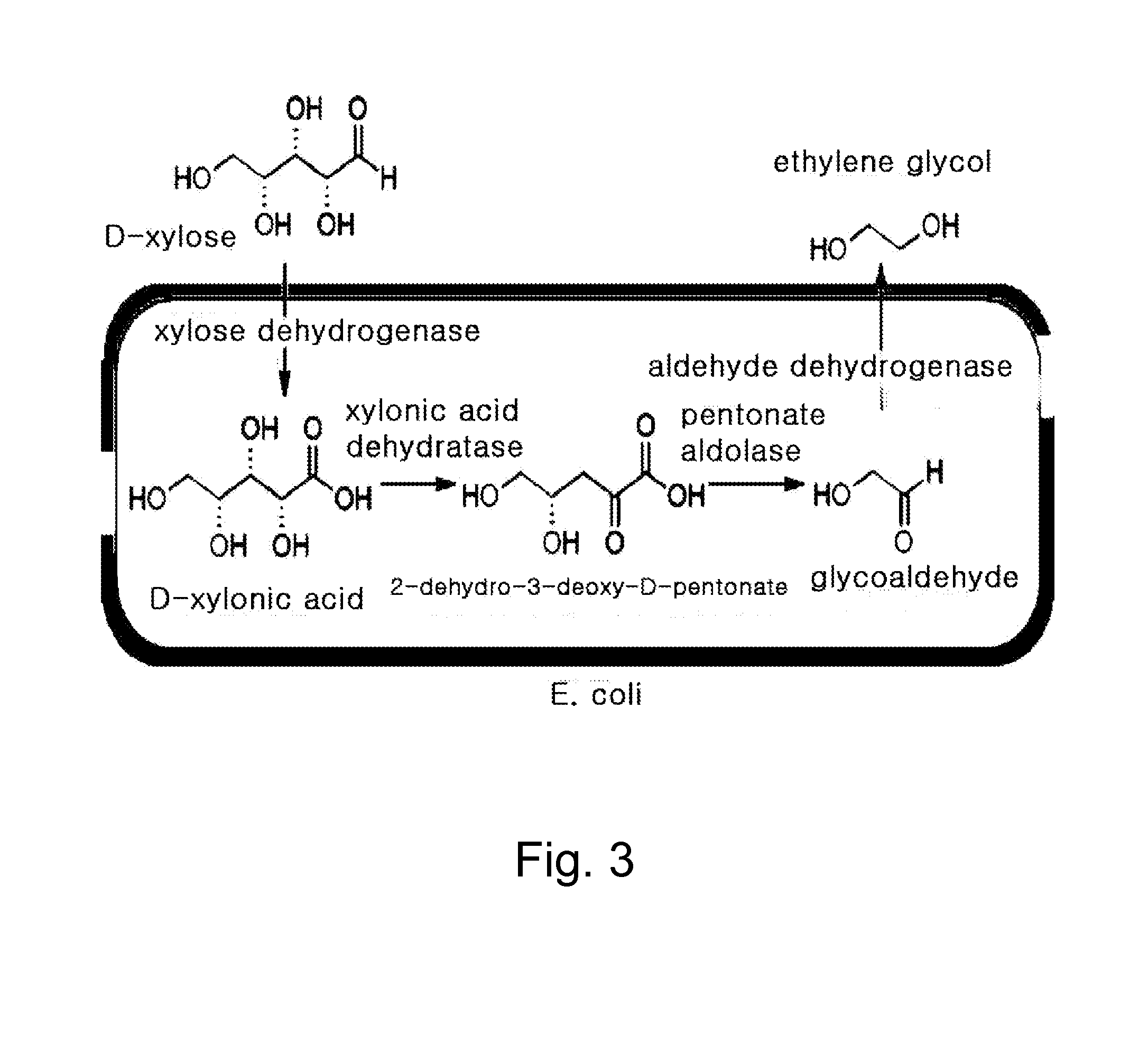Ethane-1,2-diol producing microorganism and a method for producing ethane-1,2-diol from d-xylose using the same
- Summary
- Abstract
- Description
- Claims
- Application Information
AI Technical Summary
Benefits of technology
Problems solved by technology
Method used
Image
Examples
example 1
Designing of a Biosynthesis Route for Ethane-1,2-Diol Production of the Present Invention
[0116]The inventors of the present invention designed a biosynthesis route for ethane-1,2-diol production from D-xylose in E. coli (FIG. 2), in which the first step of the biosynthesis route is to convert D-xylose into D-xylonic acid by the catalytic activity of D-xylose dehydrogenase; the second step is to convert D-xylonic acid into 2-dehydro-3-deoxy-D-pentonate by the catalytic activity of D-xylonic acid dehydratase in E. coli; the third step is to convert 2-dehydro-3-deoxy-D-pentonate into glycoaldehyde by the catalytic activity of 2-dehydro-3-deoxy-D-pentonate aldolase in E. coli; and the fourth step is to convert glycoaldehyde into ethane-1,2-diol by the catalytic activity of aldehyde dehydrogenase in E. coli.
[0117]More specifically, in the first step of the biosynthesis route of the present invention, D-xylose dehydrogenase was used to convert D-xylose into D-xylonic acid. Since D-xylose...
example 2
Thermodynamic Analysis of a Biosynthesis Route for Ethane-1,2-Diol Production of the Present Invention
[0118]A thermodynamic analysis was performed for the theoretical evaluation of the biosynthesis route for ethane-1,2-diol production of the present invention (FIG. 2) regarding its thermodynamic practicability. In order to calculate the standard Gibbs free energy change (ΔrG′°) for each reaction, a group contribution method was applied thereto (Non-patent Document 13). All ΔrG′° values relating to reaction schemes are shown in Table 1 below.
TABLE 1ΔrG′° values in biosynthesis route for ethane-1,2-diol productionΔrG′°StepReactionEnzyme(kcal / mol)1D-xylose + NAD+ + H2O → D- D-xylose−14.1xylonate + NADH + 2H+dehydrogenase2D-xylonate → 2-keto-3-D-xylonate−8.6deoxy-D-xylonate + H2Odehydratase32-keto-3-deoxy-D-xylonate2-dehydro-3-deoxy-D-4.3→ glycoaldehyde +pentonate aldolasepyruvate4glycoaldehyde + NAD(P) H +glycoaldehyde−7.1H+ → ethane-1,2-glycol +dehydrogenaseNAD(P)+
[0119]The result sho...
example 3
Confirmation of Predictability of Other Byproducts in the Biosynthesis Route for Ethane-1,2-Diol Production of the Present Invention
[0120]The predictability of a potential reaction capable of converting the intermediate products of the biosynthesis route (FIG. 2) for ethane-1,2-diol production into other byproducts was analyzed by a route prediction system of University of Minnesota Biocatalysis and Biodegradation Database (UM-BBD).
[0121]The result confirmed that the two reactions of b1 and b2 in the biosynthesis route for ethane-1,2-diol production of the present invention could occur in E. coli as shown in FIG. 2. Xylose isomerase (XI) and aldehyde dehydrogenase (AldA) were shown to exhibit their respective catalytic activities in the two reactions described above (EcoCYC).
PUM
| Property | Measurement | Unit |
|---|---|---|
| Strain point | aaaaa | aaaaa |
Abstract
Description
Claims
Application Information
 Login to View More
Login to View More - R&D
- Intellectual Property
- Life Sciences
- Materials
- Tech Scout
- Unparalleled Data Quality
- Higher Quality Content
- 60% Fewer Hallucinations
Browse by: Latest US Patents, China's latest patents, Technical Efficacy Thesaurus, Application Domain, Technology Topic, Popular Technical Reports.
© 2025 PatSnap. All rights reserved.Legal|Privacy policy|Modern Slavery Act Transparency Statement|Sitemap|About US| Contact US: help@patsnap.com



